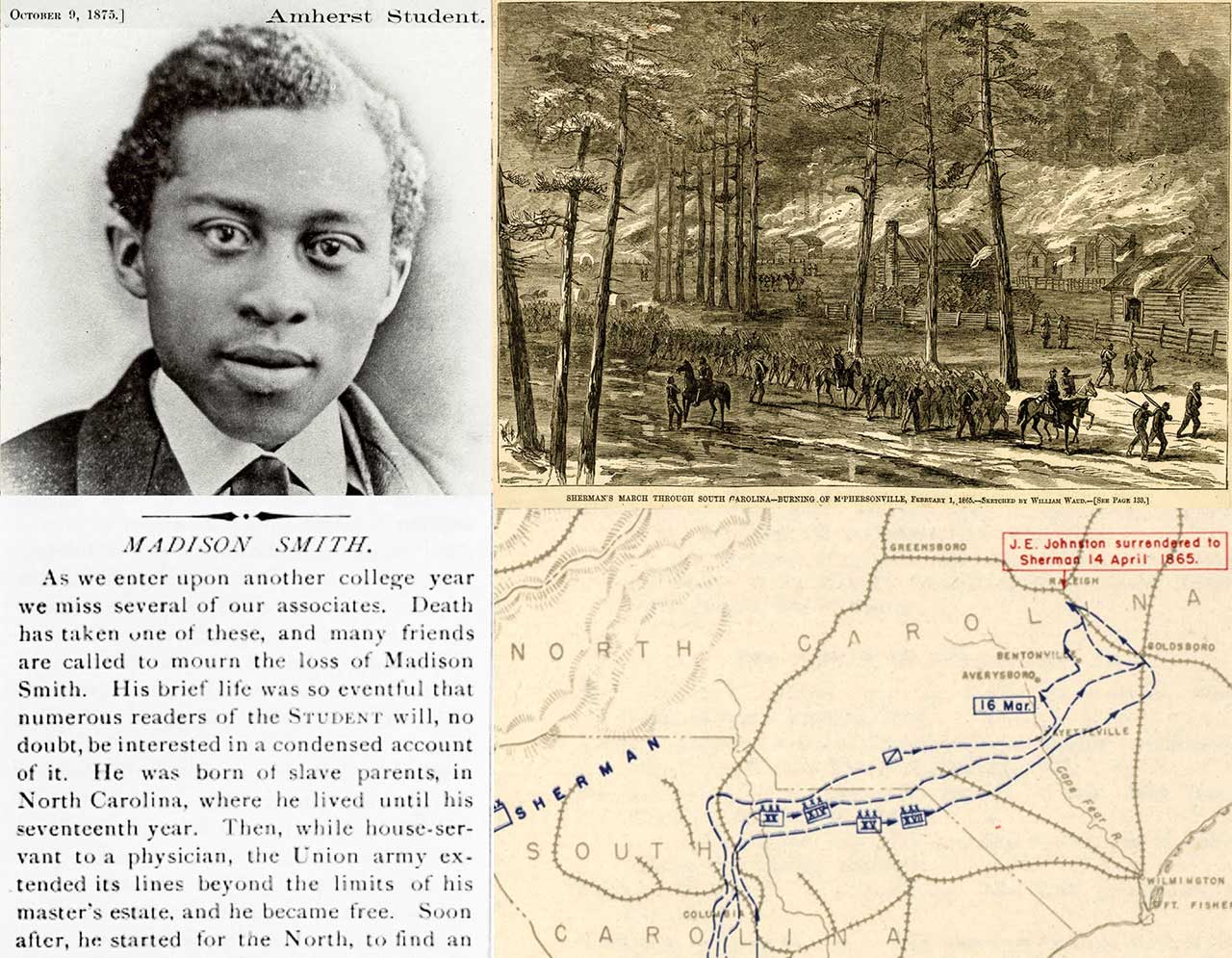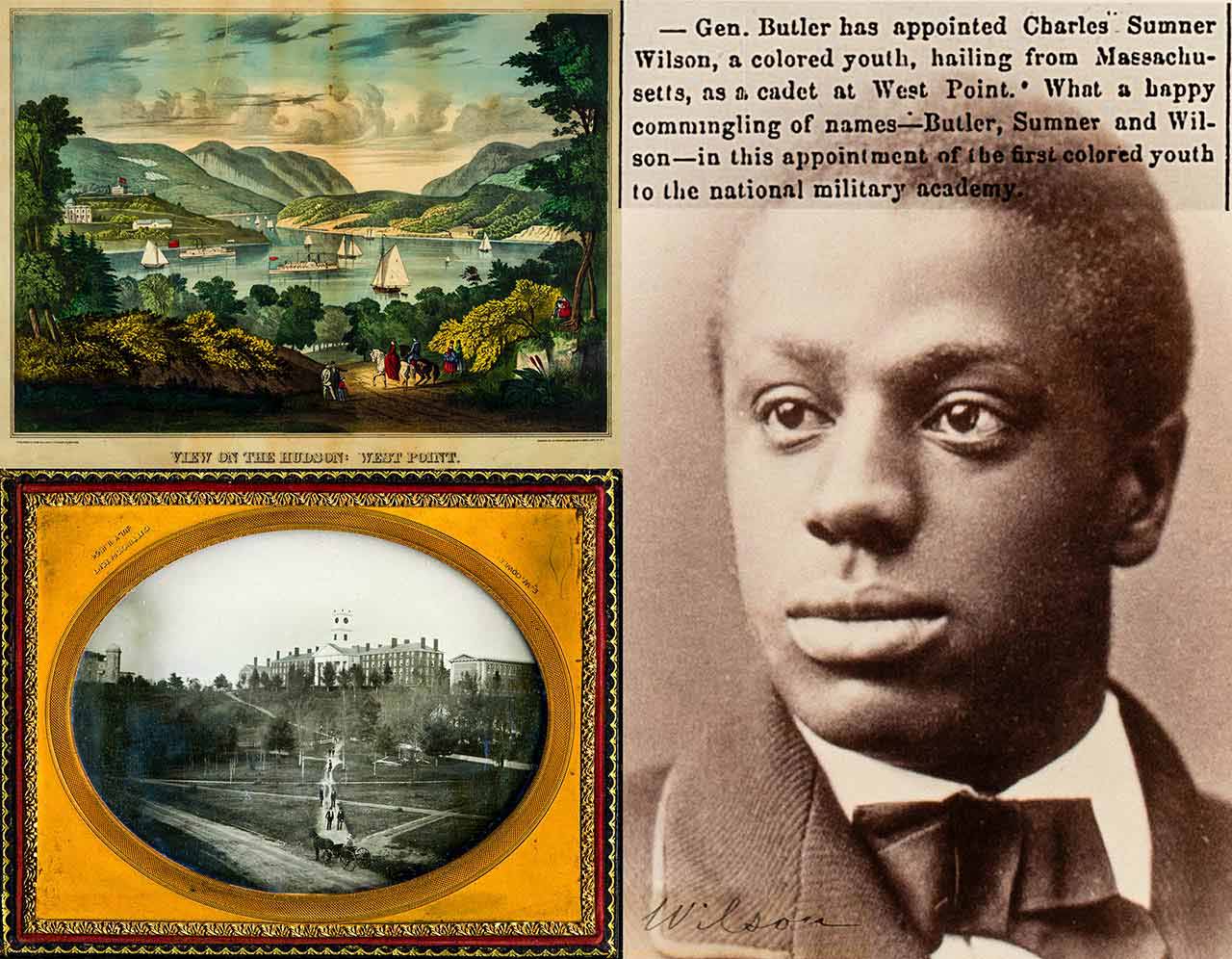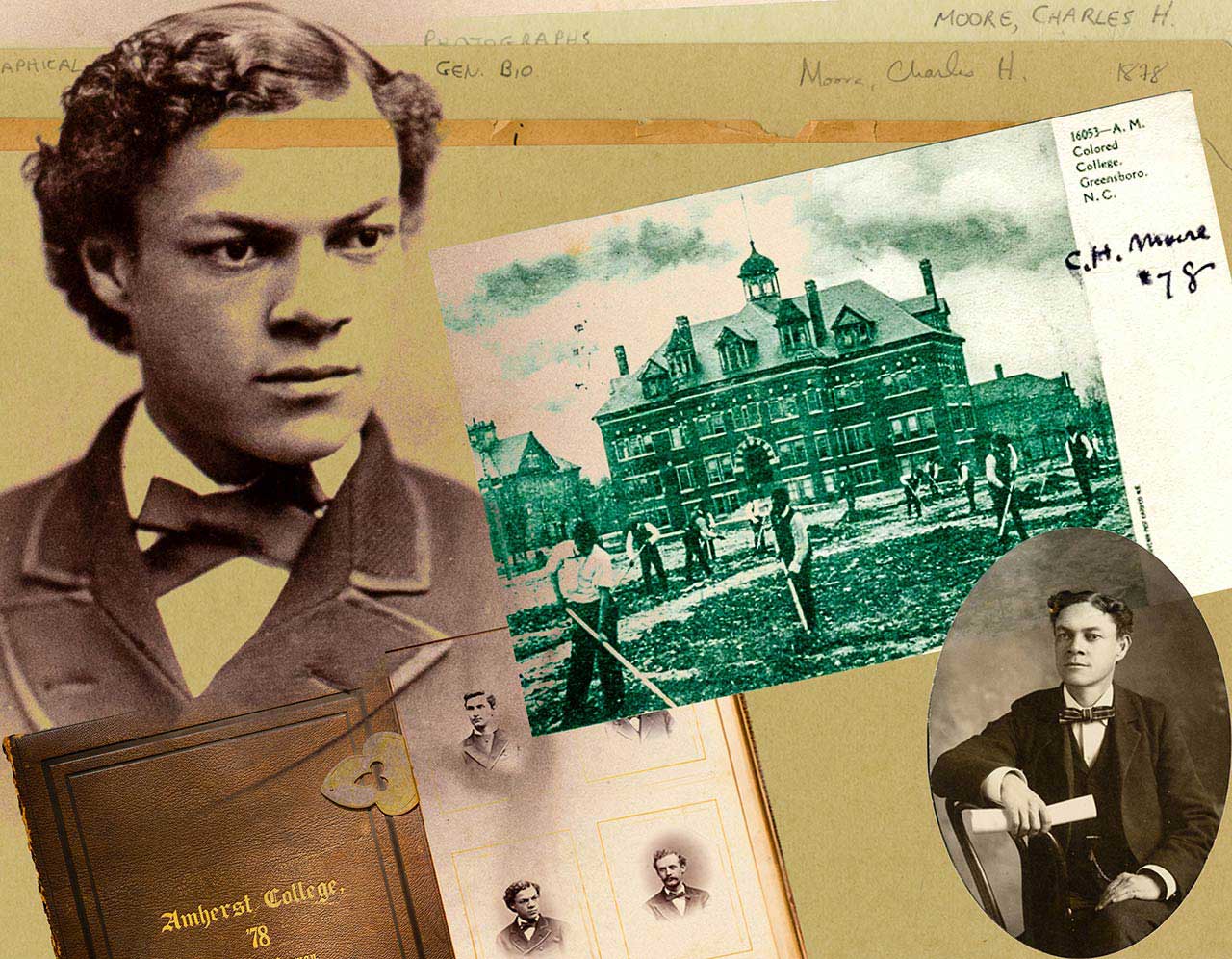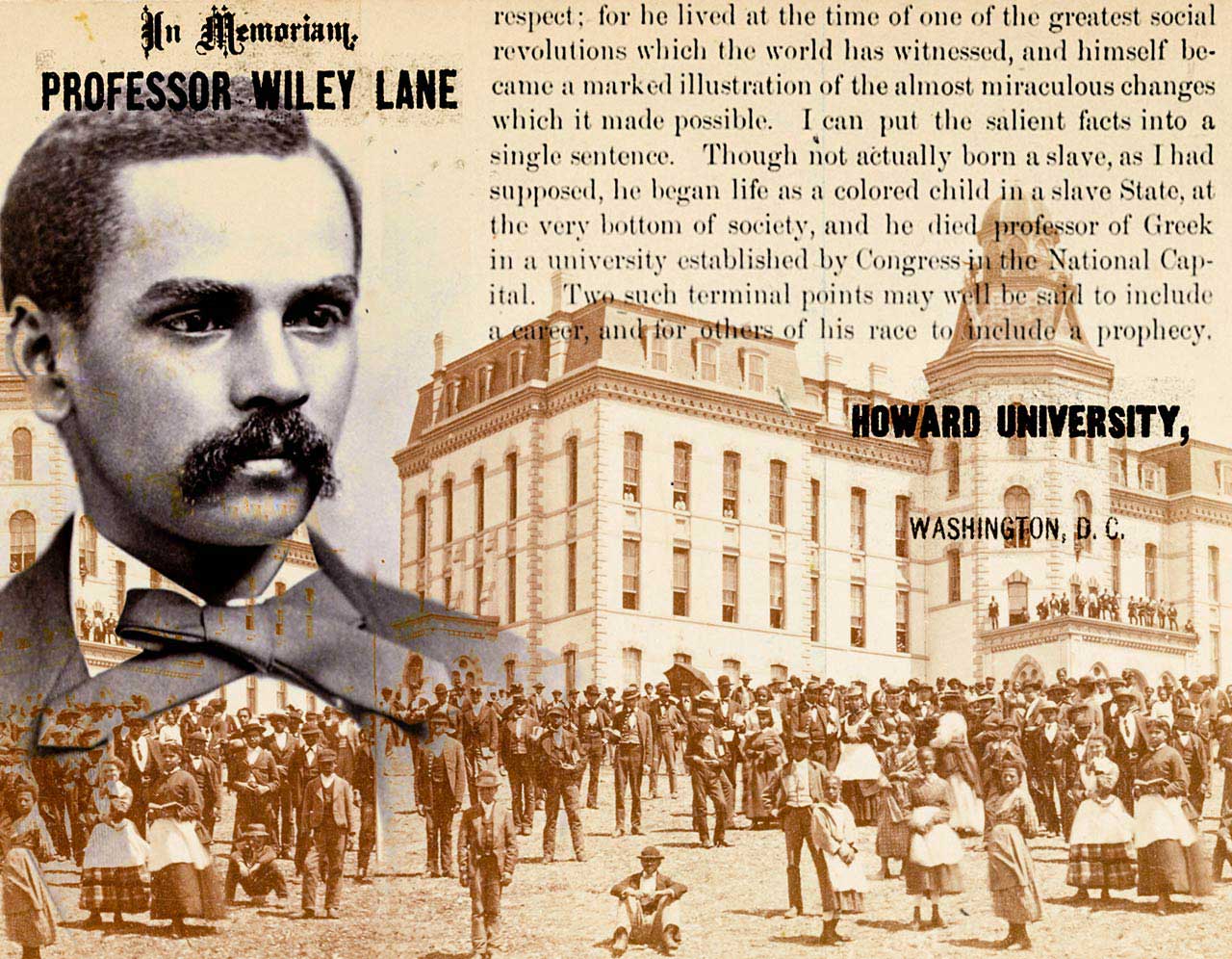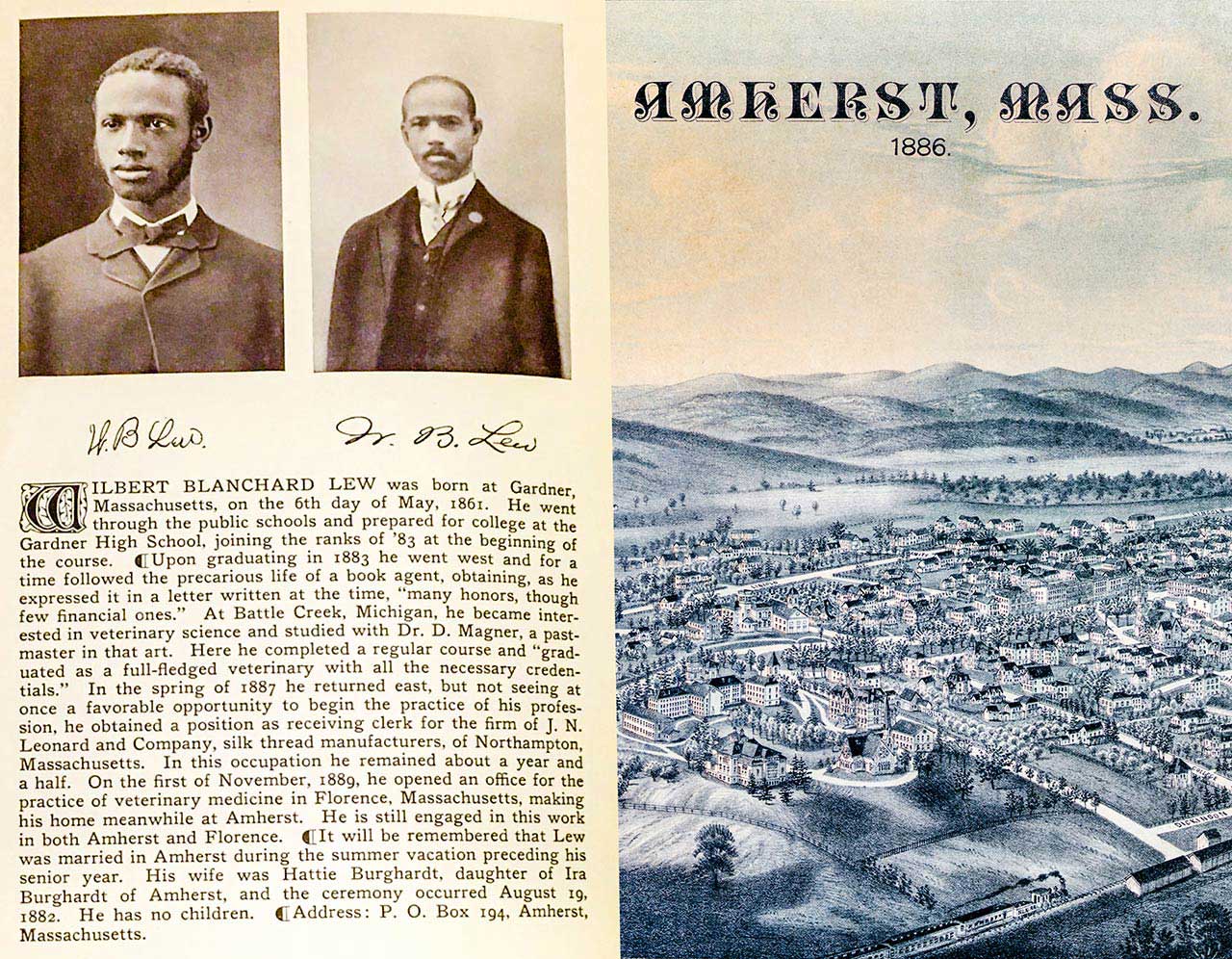After graduation Wilbert Lew studied veterinary medicine in Michigan, returning to Amherst in 1887. He lived in Amherst while practicing veterinary medicine in Florence, Mass. In 1920 he was also appointed “inspector of animals” for the town of Amherst.
Right: Map of Amherst, Mass. published March 1887. This detail shows the Amherst College campus and part of Amherst town. Courtesy of Library of Congress, Prints and Photographs Division
Left: Lew provided a biographical sketch and an up-to-date portrait for the class of 1883’s 25th Reunion book:
Transcript of text in image:
Wilbert Blanchard Lew was born at Gardner, Massachusetts, on the 6th day of May, 1861. He went through the public schools and prepared for college at the Gardner High School, joining the ranks of ’83 at the beginning of the course.
Upon graduating in 1883 he went west and for a time followed the precarious life of a book agent, obtaining, as he expressed it in a letter written at the time, “many honors, though few financial ones.” At Battle Creek, Michigan, he became interested in veterinary science and studied with Dr. D. Magner, a past-master in that art. Here he completed a regular course and “graduated as a full-fledged veterinary with all the necessary credentials.” In the spring of 1887 he returned east, but not seeing at once a favorable opportunity to begin the practice of his profession, he obtained a position as receiving clerk for the firm of J N. Leonard and Company, silk thread manufacturers, of Northampton, Massachusetts. In this occupation, he remained about a year and a half. On the first of November, 1889, he opened an office for the practice of veterinary medicine in Florence, Massachusetts, making his home in Amherst. He is still engaged in this work in both Amherst and Florence.
It will be remembered the Lew was married in Amherst during the summer vacation preceding his senior year. His wife was Hattie Burghardt, daughter of Ira Burghardt of Amherst, and the ceremony occurred August 19, 1882. He has no children.

